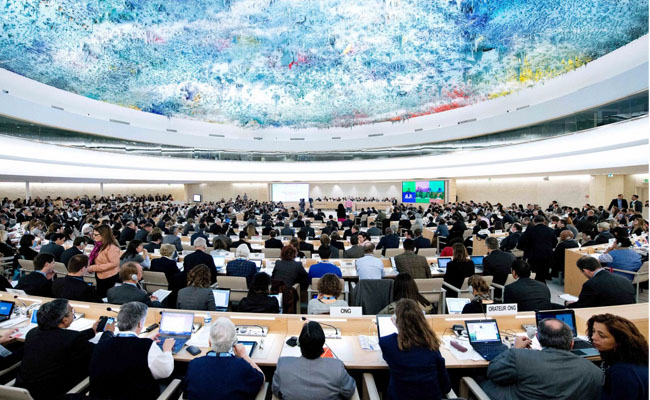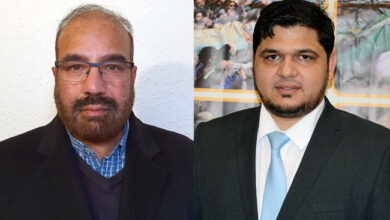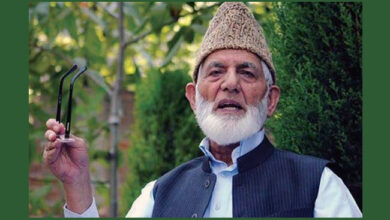The Concept of Self-Determination and the Issue of Kashmir

Dr. Ghulam Nabi Fai Chairman
World Forum for Peace & Justice
February 28, 2024
(Fourth & final part of four-part article series)
Much is being made of the fact that seven decades have passed since the principled solution on Kashmir was formulated by the United Nations with almost universal support. These resolutions are obsolete and out of date, so says the Government of India. The passage of time cannot invalidate an enduring and irreplaceable principle – the right of self-determination of the people of Kashmir. If passage of time were allowed to extinguish solemn international agreements, then the United Nations Charter should suffer the same fate as the resolutions on Kashmir. If non-implementation were to render an agreement defunct, then the Geneva Convention in twenty-first century in many countries is in no better state than these resolutions.
Professor Khurshid Ahmed, Chairman, Institute of Policy Studies, articulately defended the international legitimacy of the UN Security Council resolutions in these words “The foremost question is that if the international law, Geneva Convention, covenants among nations, international assurances and pledges are subject to time limitation: To our knowledge, there is no such international law, principle or tradition. Nor is it possible. Is it not a fact that the Portuguese had occupied Macao in 1557 that continued for four and a half centuries, but China at last regained it in 1999 as prolonged occupation could not be a justification for distorting the facts. Has the Resolution 242 that was passed after the Arab-Israel war of 1967 been outdated merely because of lapse of time? Utrecht Treaty was signed in 1713 that transferred sovereignty over Gibraltar from Spain to Britain. The treaty did not become defunct because of lapse of time and in spite of Spain’s claims. Britain gained control of Hong Kong in 1898 from China but had to return it after 99 years in line with its accord with China. The agreement of Taiwan is likewise a live issue despite the lapse of time. Another case is of East Timor, the one Mr. Kofi Annan has referred to. The UN Resolution is of 1975 and got implemented only in 2000, after 25 years. If 25 years’ lapse could not render ineffective the Resolution of 1975, how can the Resolutions on Kashmir be ineffective.”
It is worth noting that when the people of Kashmir demand the right of self-determination, they do not demand it only under the UN Charter or under the Universal Declaration of Human Rights or under Article 1 of the International Covenant on Civil and Political Rights, which they can do lawfully but they do demand this right under the 16 substantive resolutions of the United Nations Security Council.
Secondly, the International Court of Justice set out four factors of a people to seek the right to self-determination: 1). A definable territory; 2). A history of independence or self-rule; 3). A distinct culture; 4). A will and capacity to regain self-governance. Kashmir meets all the required standards.
First factor. A definable territory: The territory of Kashmir comprises about 86,000 square miles. It is more than three times the size of Belgium, the Netherlands and Luxemburg combined. It is also somewhat larger even than the United Kingdom. It is in fact larger than 103 sovereign countries. Its current population 23.5 million makes Kashmir bigger than 129 independent nations.
Second factor. A history of independence or self-rule: Kashmir had a long history of self-governance pre-dating the colonial period. In this regard it is revealing that under British colonial rule, Kashmir was granted internal autonomy. The territory of Kashmir has been clearly defined for centuries. Kashmir successfully regained independence when overrun by Alexander’s Empire in the 3rd century B.C. and the Moghul Empire of the 16th and 17th centuries.
Third factor. Regarding cultural uniqueness: The Kashmiri culture is distinct from other cultures. Kashmiri culture is known as Kashmiriat. Its culture has unique folklore, dress, traditions, and cuisine. Everyday artifacts such as cooking pots, jewelry have the unique Kashmiri style. Even fabric, embroidery, carpets and shawls have uniquely Kashmiri designs. The Kashmiri people speak totally different language – Kashmiri – which is distinct from Urdu, Hindi and Persian. One prime and interesting example is tea. In whole of India and Pakistan, people take tea with sugar while as in Kashmir they take tea with salt.
Fourth factor. Will and capacity to regain self-determination. Never really since 1947 have the people of Kashmir given up the wish of self-determination.’ They resisted the British and maintained autonomy throughout British rule. In 1931 the Kashmiri people and their leadership formed the “Quit Kashmir” movement against the British and the British-supported maharajah. And the “Quit Kashmir” campaign against the maharajah continued into 1946, when it reconstituted itself into the Azad (Free) Kashmir movement. Resistance to Indian occupation has continued unabated throughout Indian occupation until today. At present, the people of Kashmir have been facing a brutal occupation. The presence of 900,000 Indian military and paramilitary forces have made Kashmir the largest army concentration anywhere in the world. Indian army has killed more than 100,000 innocent Kashmiris. Yet, the people of Kashmir have never lost hope in their objective, which is the right of self-determination.
As an American of Kashmiri ancestry, it may not be out of the way to state that the United States upheld the right to self-determination for the people of Kashmir right from the very beginning in 1948. However, we are dismayed that United States has not articulated its policy on Kashmir into a tangible framework which could settle the Kashmir conflict once for all. Let me illustrate the principal aspect of US foreign policy.
“The long-standing U.S. position on Kashmir is that the territory’s status should be settled through negotiations between India and Pakistan while taking into consideration the wishes of the Kashmiri people.” [Congressional Research Service (CRS) January 13, 2020]
Ambassador Robert B. Oakley, US Ambassador to Pakistan wrote a letter to me on February 27, 1991, and articulated US policy in Kashmir in these words, “The United States officially characterizes Kashmir as disputed territory. It does not accept India’s contention that the United Nations resolutions no longer apply, and that Kashmir is an integral part of India.”
The United States and Britain have traditionally been committed supporters of the plebiscite agreement as the only way to resolve this issue. They sponsored all of the Security Council resolutions which called for a plebiscite. Their commitment was indicated by a personal appeal made by America’s President Harry Truman and Britain’s Prime Minister Clement Atlee that differences over demilitarization be submitted to arbitration by the Plebiscite Administrator, a distinguished American war hero: Admiral Chester Nimitz. Another American diplomat, Senator Frank Graham visited the Subcontinent as the United Nations Representative to negotiate the demilitarization of Kashmir prior to the plebiscite.
Now what needs to be done?
First, the question arises: what should be the point of departure for determining a just and lasting basis? The answer obviously is (a) the Charter of the United Nations which, in its very first article, speaks of “respect for the principles of equal rights and self-determination of peoples” and (b) the international agreements between the parties to the dispute.
Second, the Kashmir dispute must not be resolved militarily. It is a political issue and needs to be resolved through political means only.
Third, there cannot be and should not be any conditions from any party, other than commitment to negotiations.
Fourth, there can be no progress in talks if they are not accompanied by practical measures to restore an environment on non-violence in Indian Occupied Kashmir. Following steps can pave the way for creating that environment.
i. There must be an immediate and complete cessation of military and paramilitary action by Indian forces against the people of Jammu & Kashmir.
ii. All bunkers, watch towers and barricades set up by the Indian military and paramilitary forces in towns and villages must be immediately dismantled.
iii. All those imprisoned in connection with resistance to the Indian occupation must be unconditionally released, including Mohammad Yasin Malik, Shabir Ahmed Shah, Masarat Aalam Bhat, Aasia Andrabi, Khurram Parvez and others.
iv. The draconian laws, including Domicile Law which is designed to change the demography of Kashmir must be repealed immediately.
v. The right of peaceful association, assembly and demonstration must be restored to the people.
vi. International and impartial NGOs like Amnesty International, Human Rights Watch, etc. must be permitted to visit Kashmir.
vii. The United Nations Special Thematic Rapporteurs must have access to assess the situation in Kashmir and report back to the Human Rights Council in Geneva.
(Concluded)
Dr. Fai is also, Secretary general World Kashmir Awareness Forum
He can be reached at: WhatsApp: 1-202-607-6435





